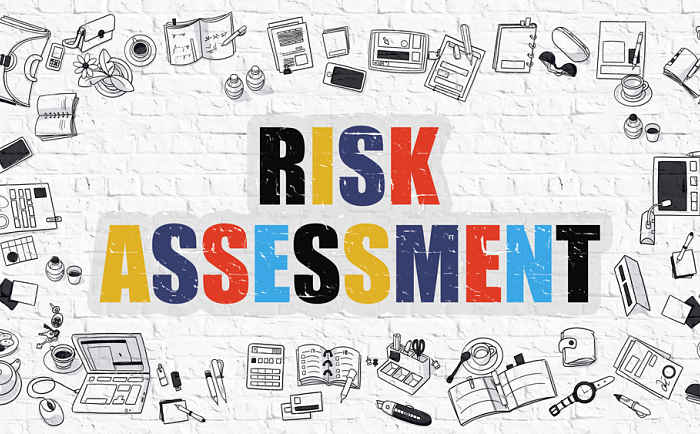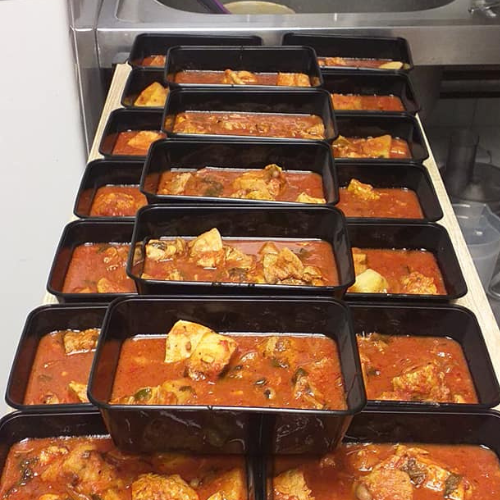A Comprehensive Guide to Risk Assessment for Corporate Catering Events.
A Comprehensive Guide to Risk Assessment for Corporate Catering Events
A comprehensive risk assessment plan can help you identify potential hazards, assess the likelihood and severity of those hazards, and implement measures to manage or mitigate those risks. In this guide, we’ll take a closer look at the importance of risk assessment for corporate catering events and provide a step-by-step framework that you can follow to conduct your own risk assessment. From identifying potential hazards to implementing risk management strategies, we’ll cover everything you need to know to ensure a safe and successful corporate catering event.
Types of risks in corporate catering events
Before we dive into the specifics of risk assessment, it’s important to understand the types of risks that can arise in corporate catering events. These risks can be broadly classified into three categories: physical, social, and financial.
Physical risks are those associated with the event’s physical environment, such as the venue’s structural integrity, equipment safety, and food hygiene. For example, a poorly maintained venue can pose a risk of accidents, such as slips and falls, while improperly stored food can lead to foodborne illnesses.
Social risks are those that arise from human interactions, such as inappropriate behavior, harassment, or conflicts between attendees. These risks can damage the event’s reputation, lead to legal issues, and impact attendees’ mental health and well-being.
Financial risks are those that arise from the event’s financial management, such as overspending, budgeting errors, or fraudulent activities. These risks can lead to financial losses, legal issues, and reputational damage.
Importance of risk assessment in corporate catering events
Risk assessment is a crucial process that helps event planners identify potential hazards and implement measures to manage or mitigate those risks. By conducting a risk assessment, event planners can:
- Ensure the safety and well-being of all attendees
- Protect the event’s reputation and brand image
- Minimize financial losses and legal issues
- Demonstrate a commitment to safety and risk management
A thorough risk assessment plan can also help event planners identify opportunities for improvement and continuous learning. By reviewing the event’s risks and outcomes, event planners can make informed decisions and adjust their strategies for future events.
Steps in conducting a risk assessment for corporate catering events
Now that we’ve established the importance of risk assessment, let’s take a closer look at the steps involved in conducting a risk assessment for corporate catering events. These steps can be broken down into four stages: identification of potential hazards, evaluation of risks and their impacts, development of risk management plan, implementation of risk management plan, and monitoring and review of risk management plan.
Identification of potential hazards
The first step in conducting a risk assessment is to identify potential hazards that may arise during the event. This can be done by conducting a thorough site inspection of the venue and reviewing the event’s itinerary. Some common hazards to consider include:
- Structural hazards, such as uneven flooring or inadequate lighting
- Equipment hazards, such as faulty electrical wiring or malfunctioning kitchen appliances
- Food hazards, such as cross-contamination or food spoilage
- Social hazards, such as inappropriate behavior or conflicts between attendees
- Financial hazards, such as overspending or budgeting errors
It’s important to involve all stakeholders in this process, including venue staff, catering staff, and event attendees. Their input can help identify potential hazards that may be overlooked by the event planner.
Evaluation of risks and their impacts
Once potential hazards have been identified, the next step is to evaluate the likelihood and severity of those hazards. This can be done by assigning a risk rating to each hazard based on the likelihood of occurrence and the severity of its impact. Risk ratings can be classified into high, medium, or low risk categories.
For example, a hazard that has a high likelihood of occurrence and a severe impact on attendees’ safety and well-being would be classified as a high-risk hazard. On the other hand, a hazard that has a low likelihood of occurrence and a minor impact on attendees’ safety and well-being would be classified as a low-risk hazard.
Development of risk management plan
Once potential hazards have been identified and evaluated, the next step is to develop a risk management plan. This plan should outline the specific measures that will be implemented to manage or mitigate each identified hazard.
For example, if a hazard is identified as a high-risk hazard, the risk management plan may include measures such as:
- Implementing additional safety measures, such as installing handrails or adding lighting
- Conducting regular equipment checks to ensure proper functioning
- Enforcing strict food hygiene protocols, such as temperature monitoring and hand washing
- Developing a code of conduct for attendees to prevent inappropriate behavior
- Establishing a budget monitoring system to prevent overspending
It’s important to involve all stakeholders in the development of the risk management plan to ensure that all potential hazards are addressed and that the plan is feasible and practical.
Implementation of risk management plan
Once the risk management plan has been developed, the next step is to implement the plan. This involves putting into action all the measures identified in the risk management plan.
For example, if the risk management plan includes implementing additional safety measures, the event planner would need to coordinate with the venue staff and contractors to install the necessary equipment. If the risk management plan includes developing a code of conduct, the event planner would need to communicate the code of conduct to all attendees and enforce it throughout the event.
Monitoring and review of risk management plan
The final step in conducting a risk assessment is to monitor and review the risk management plan. This involves regularly reviewing the plan to ensure that all measures are being implemented effectively and that there are no new or emerging risks that need to be addressed.
For example, if a new hazard is identified during the event, the event planner would need to assess the hazard’s likelihood and severity and determine if additional measures need to be implemented to manage or mitigate the risk.
Importance of contingency planning in corporate catering events
Despite the best efforts of event planners, unforeseen circumstances can still arise during corporate catering events. That’s why it’s important to have a contingency plan in place. A contingency plan outlines the specific measures that will be implemented in the event of an emergency or unforeseen circumstance.
For example, if there is a power outage during the event, the contingency plan may include measures such as:
- Activating backup generators
- Providing additional lighting
- Revising the itinerary to accommodate the outage
By having a contingency plan in place, event planners can minimize the impact of unforeseen circumstances and ensure the safety and satisfaction of all attendees.








